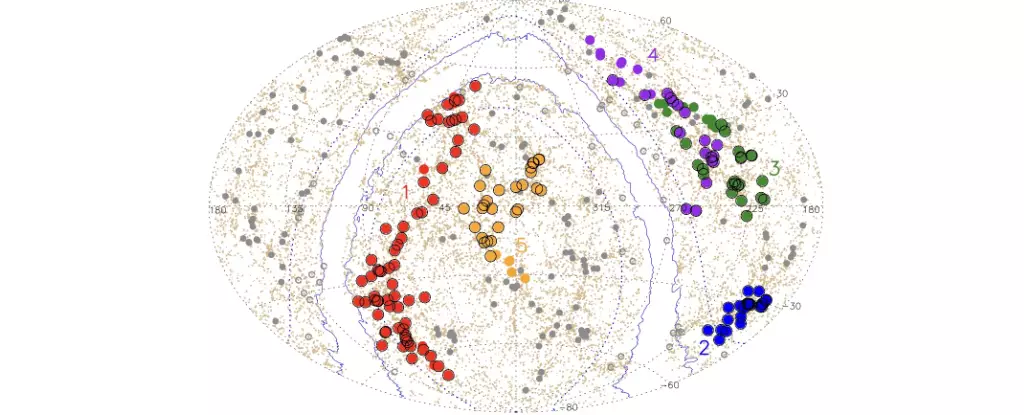The universe is a vast and complex tapestry woven from innumerable celestial bodies and structures. As scientists strive to decode the intricacies of the cosmos, one aspect becomes increasingly evident: our comprehension of vast cosmic structures is crucial for a holistic understanding of the universe itself. Among these awe-inspiring formations, the discovery of superstructures, such as Quipu—the largest known structure to date—has provided a remarkable lens through which we can study the universe’s evolution and its underlying mechanisms.
Quipu: An Overview
Named after an ancient Incan system of record-keeping using knotted cords, the Quipu superstructure spans an astonishing 400 megaparsecs, or around 1.3 billion light-years, and contains an estimated 200 quadrillion solar masses. This staggering mass and size challenge our existing cosmological frameworks, forcing us to re-evaluate our models of galaxy formation and evolution. Researchers have identified Quipu as part of a larger network of superstructures, which collectively account for a significant proportion of all known galaxy clusters and matter in the universe. Specifically, Quipu and its companions constitute around 45 percent of galaxy clusters and 25 percent of the total matter density.
Understanding superstructures like Quipu is not merely an academic exercise; it has profound implications for the accuracy of cosmological measurements. The research spearheaded by Hans Bohringer and colleagues emphasizes the need to decipher the impacts of these colossal structures on cosmological parameters. For instance, the gravity yielded by these large masses influences cosmic microwave background (CMB) radiation—relic energy from the Big Bang—that serves as a pivotal benchmark for cosmological models.
As light from the CMB traverses the universe, it encounters large superstructures, which warp its path due to gravitational lensing. This results in detectable variations or fluctuations in the CMB data. Through these fluctuations, researchers can glean insights into the universe’s composition and expansion, but they complicate measurements by introducing artifacts that obscure our interpretations.
Local Effects of Superstructures
Beyond their broad strokes in shaping the universe, superstructures also exert significant local effects on surrounding galaxies and galaxy clusters. For instance, observations indicate a contrasting density between field clusters—those located in sparsely populated regions—and members of superstructures like Quipu. The density within superstructures tends to be greater, primarily due to the presence of massive galaxy clusters. This density disparity has implications for our understanding of how galaxies evolve within varying environments and the forces that govern their development.
Moreover, the gravitational influences of these superstructures can induce peculiar velocities in galaxies, creating an elaborate interplay between universal expansion and local dynamics. Such streaming motions must be disentangled from general expansion rates to ascertain accurate measurements of the Hubble constant—the rate of expansion of the universe. Miscalculating this constant could lead to discrepancies in estimates of the universe’s age and mass distribution.
The implications of these findings are profound. As we gather more data regarding superstructures like Quipu, researchers highlight the importance of studying their impact on galaxy populations, their interactions, and their evolution over cosmic time. Continued exploration will undoubtedly enrich our comprehension of not only the superstructures themselves but also of the broader forces shaping the cosmos.
Interestingly, while superstructures currently dominate certain regions of the universe, they are not permanent fixtures. Future cosmic evolution will see these colossal structures fragment as gravitational dynamics lead them to break apart into smaller aggregations. This transient nature adds a layer of complexity—a reminder that our universe is ever-changing and its components dynamic.
The study of superstructures like Quipu reveals crucial insights into the nature of our universe. These vast formations not only represent the pinnacle of mass concentration within the cosmos but also act as lenses—distorting and enlightening our perceptions of universal phenomena. As scientists continue to probe the depths of the universe’s structures, they are not only piecing together intricate patterns but are also revisiting the fundamental questions that lie at the heart of astrophysical research. Understanding superstructures leads to a greater appreciation of cosmic evolution, deepening our connection to the majestic universe we inhabit.


Leave a Reply